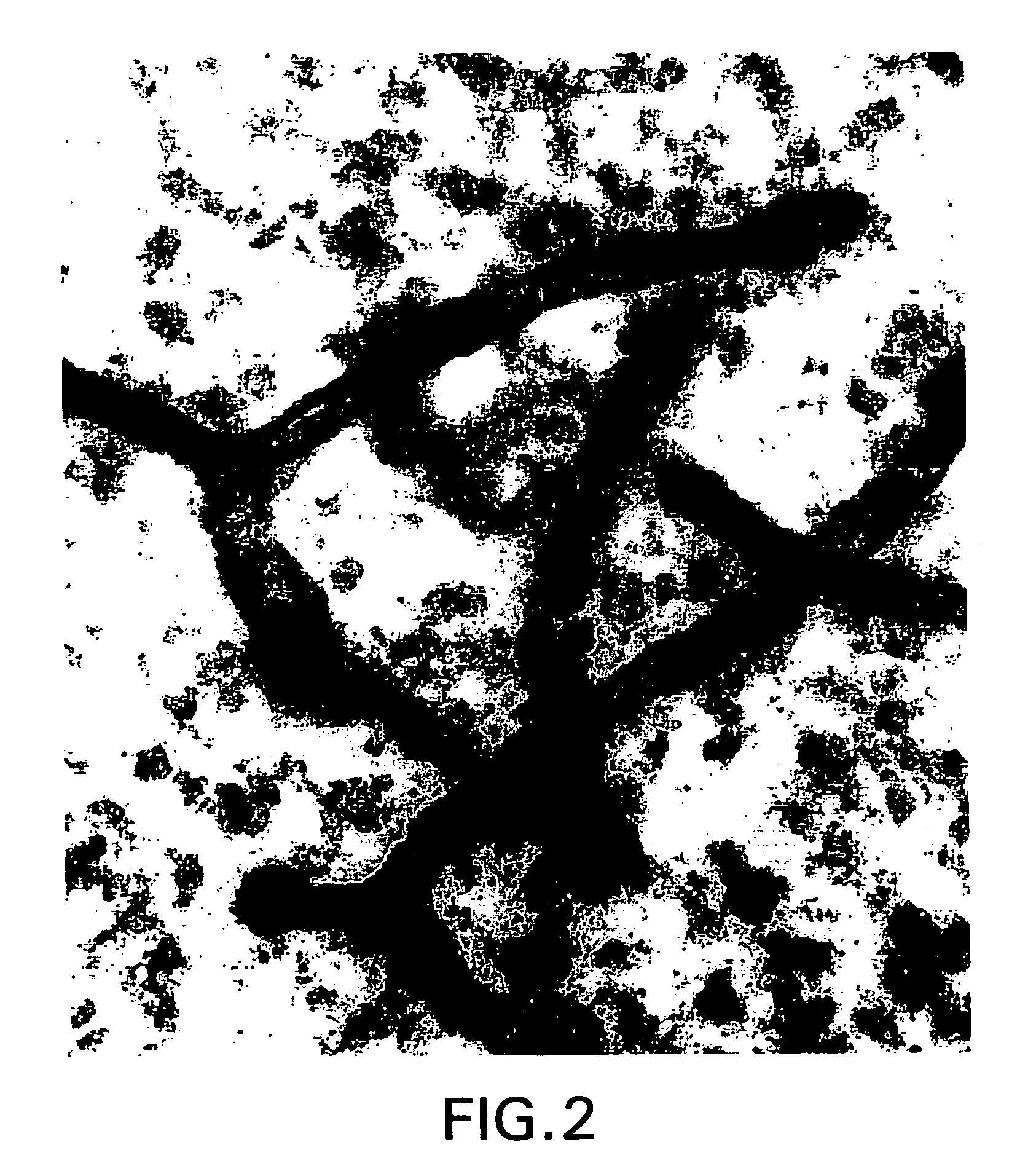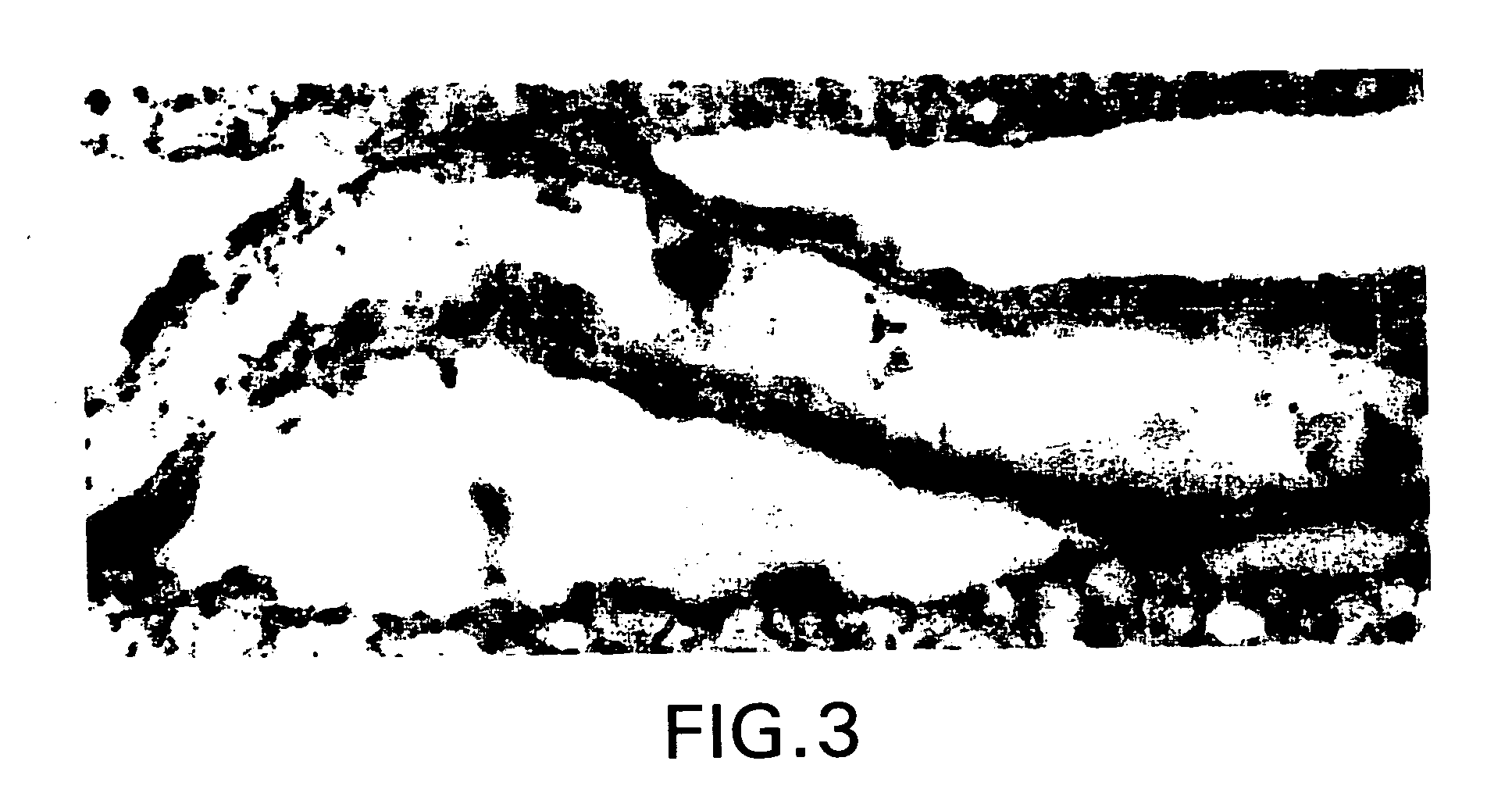Recombinant tissue protective cytokines and encoding nucleic acids thereof for protection, restoration, and enhancement of responsive cells, tissues, and organs
a technology of protective cytokines and recombinant tissue, which is applied in the direction of drug compositions, immunological disorders, metabolism disorders, etc., can solve the problems of inability to achieve intracranial administration, by and large unacceptable routes of administration for therapeutic use, especially for normal individuals, and achieve the effects of protecting, maintaining or enhancing the viability of cells, increasing hematocrit, and increasing hematocri
- Summary
- Abstract
- Description
- Claims
- Application Information
AI Technical Summary
Benefits of technology
Problems solved by technology
Method used
Image
Examples
example 1
6.1. Example 1
Distribution of Erythropoietin Receptor in Human Brain
[0316] Normal human brain removed during surgical procedures (e.g., to provide tumor-free margins in tumor resections) were immediately fixed in 5% acrolein in 0.1 M phosphate buffer (pH 7.4) for 3 h. Sections were cut with a vibrating microtome at 40 micrometer thickness. Immunohistochemical staining was performed using free-floating sections and the indirect antibody peroxidase-antiperoxidase method using a 1:500 dilution of erythropoietin receptor antiserum (obtained from Santa Cruz Biotechnology). Endogenous peroxidase activity was quenched by pretreatment of tissue sections with hydrogen peroxide (3% in methanol for 30 min). Tissue controls were also carried out by primary antibody omission and by using the appropriate blocking peptide (from Santa Cruz Biotech.) to confirm that staining was specific for erythropoietin (EPO) receptor.
[0317] FIG. 1 shows capillaries of the human brain express very high levels of ...
example 2
6.2. Example 2
Erythropoietin Crosses the Blood-Cerebrospinal Fluid Tight Barrier
[0321] Adult male Sprague-Dawley rats were anesthetized and administered recombinant human erythropoietin intraperitoneally at 5000 U / kg body weight. Cerebrospinal fluid was sampled from the cisterna magna at 30 minute intervals up to 4 hrs and the erythropoietin concentration determined using a sensitive and specific enzyme-linked immunoassay. As illustrated in FIG. 5, the baseline erythropoietin concentration in CSF is 8 mU / ml. After a delay of several hours, the levels of erythropoietin measured in the CSF begin to rise and by 2.5 hours and later are significantly different from the baseline concentration at the p<0.01 level. The peak level of about 100 mU / ml is within the range known to exert protective effects in vitro (0.1 to 100 mU / ml). The time to peak occurs at about 3.5 hrs, which is delayed significantly from the peak serum levels which occur at less than 1 hr. The results of this experiment i...
example 3
6.3. Example 3
Recombinant Tissue Protective Cytokine
[0322] The following human erythropoietin constructs were made using the following procedures. The cDNA for the human erythropoietin was cloned by PCR from human brain cDNA by using primers based on the published human cDNA sequence (accession number NM.sub.--000799). The primers were designed to introduce a Xho I site in the 5' end and a Xba I site in the 3' end of the cDNA. The primer sequences are:
2 HEPO-5-Xho I 5'-AGCTCTCGAGGCGCGGAGATGGGGGTGCACGAATG-3' (SEQ. ID. 8) HEPO-3-Xba I 5'-ATGCTCTAGACACACCTGGTCATCTGTCCCCTGTCC--3'. (SEQ. ID. 9)
[0323] The PCR product was cloned between the Xho I and Xba I sites in pCiNeo mammalian expression vector (Promega). The clones were sequenced and the sequence was verified to match the sequence in NM.sub.--000799 with the exception of a single base. Base 418 in the coding sequence (starting the numbering from the ATG) was C instead of G, changing amino acid 140 in the full length EPO sequence star...
PUM
| Property | Measurement | Unit |
|---|---|---|
| Composition | aaaaa | aaaaa |
| Electric charge | aaaaa | aaaaa |
| Acidity | aaaaa | aaaaa |
Abstract
Description
Claims
Application Information
 Login to View More
Login to View More - R&D
- Intellectual Property
- Life Sciences
- Materials
- Tech Scout
- Unparalleled Data Quality
- Higher Quality Content
- 60% Fewer Hallucinations
Browse by: Latest US Patents, China's latest patents, Technical Efficacy Thesaurus, Application Domain, Technology Topic, Popular Technical Reports.
© 2025 PatSnap. All rights reserved.Legal|Privacy policy|Modern Slavery Act Transparency Statement|Sitemap|About US| Contact US: help@patsnap.com



